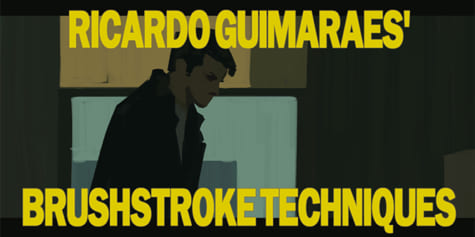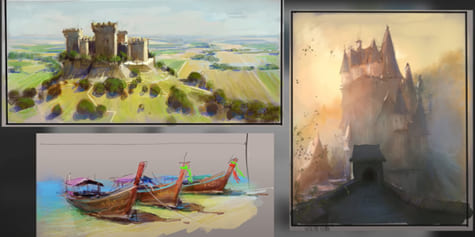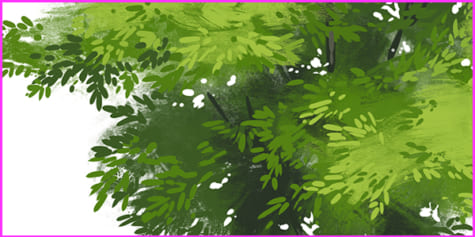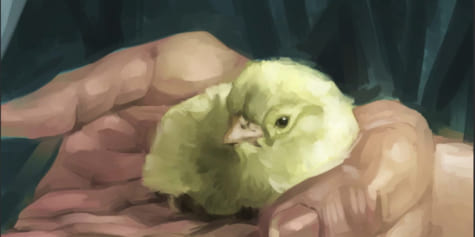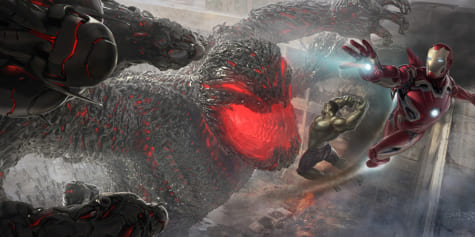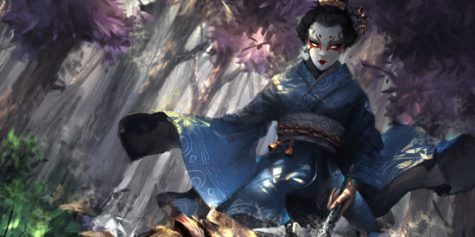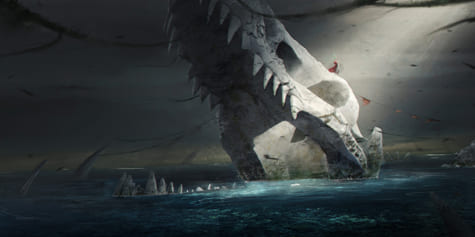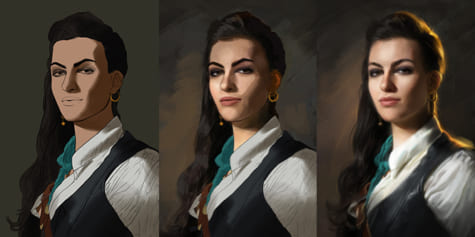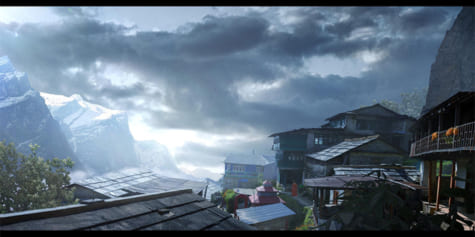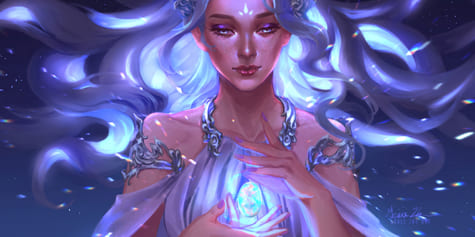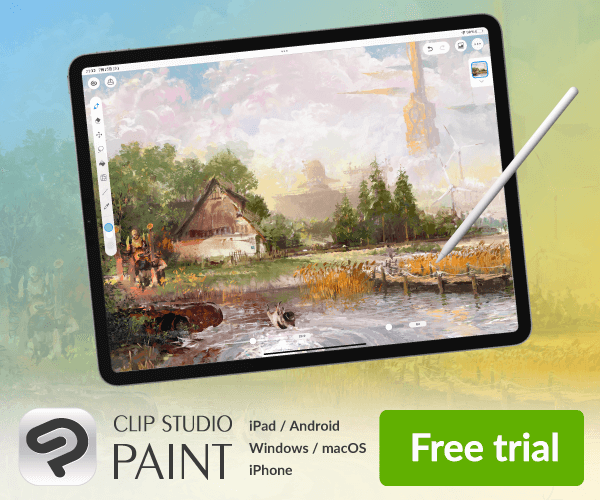Translating Traditional Painting Techniques to Digital Art
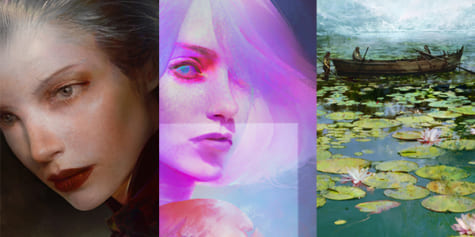
While brushes, textures, and settings can help you replicate the effect of traditional paints, learning from the actual techniques used by traditional painters will push your art to the next level. French concept artist Simon Goinard introduces some of these techniques with advice for applying them to digital art.
Summary
This is a brief workshop meant to explain how adding traditional painting techniques to a digital picture can alter its aura and bring more depth to the piece. In this regard, I will describe the meaning, effect, and ways to reproduce several painting techniques in digital format and show how those different approaches to brush strokes can have different effects on the viewer. Lastly, I will outline the end result and importance behind these techniques, which is called “Bravura” brushwork.
What you’ll need to start
You won’t need any complex technical knowledge to start experimenting with what I will cover here. However, a basic understanding of brush settings and layers adjustments in Clip Studio Paint or your preferred software could help you go further along the way.
I recommend this series of simple tips if you are just starting to paint in Clip Studio:
Tips for Painting/Adjusting the Realistic Watercolor Brush
A short introduction
Subject, Medium and Style are the three fundamentals of a painting. In digital format, out of those three components, two are very interlinked and often confused: Medium (brushes) and Style (rendering).
Many digital software today have ways to emulate media, as brushes with textures or variable edges are now available. However, as lots of people often experience, those brushes alone are not sufficient to reproduce the feeling or the rendering that they have in mind for their paintings.
This is because we often tend to forget that a brush style is not just based on a brush, it’s a combination of a brush, a technique, and lots of experience. Based on this principle, I will highlight some techniques that, in combination with the right medium and some practice, can lead to more depth in your paintings.
Defining with Gesture
The first traditional technique that needs to be understood and conveyed digitally is gesture, as a painting is much more than just a copy of real scenery or the recreation of a conceptual idea. Synthesizing an idea with a movement is a big part of the difference between a good painting and a masterful one.
Learning to illustrate with gesture will quickly level your eye and hand to good compositions and dynamic visuals.
The following three rules wilI assist you a lot with gesture:
1. Always build your composition at a small size (under 800px) with larger than usual brushes (+50% to 200%).
This will help convey a dynamic feeling to the sketch and train your muscle memory effortlessly.
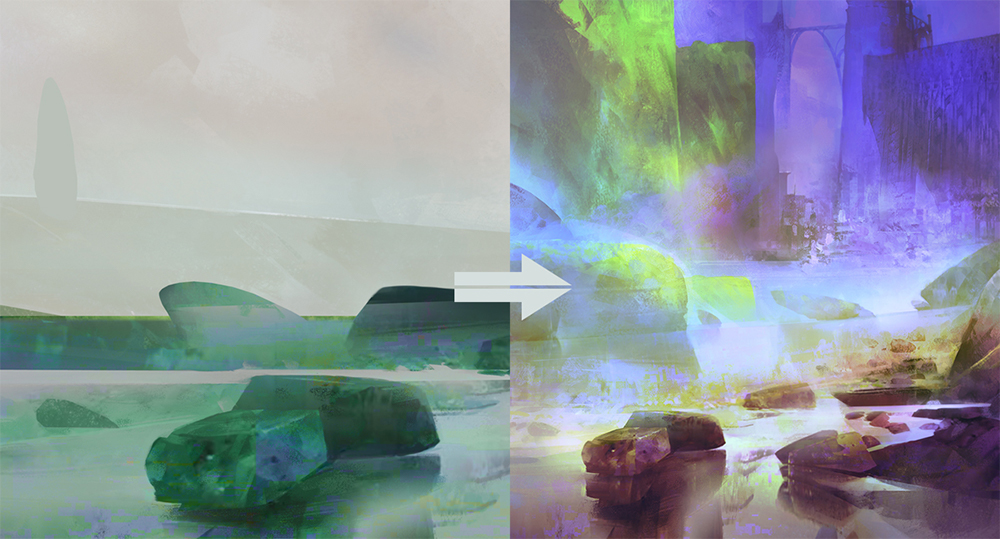
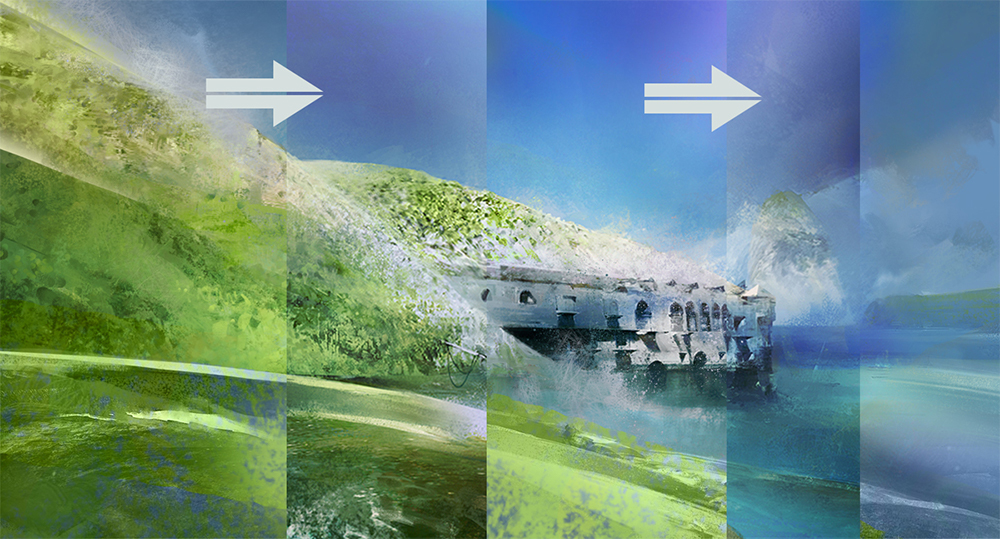
2. Always built your underpaint with the same method: sharp-edged brushes to define the subjects, loose-edged brushes to define the immediate surroundings.
This is an important rule that will also generate strong contrasts, hierarchy and focal points on your picture.
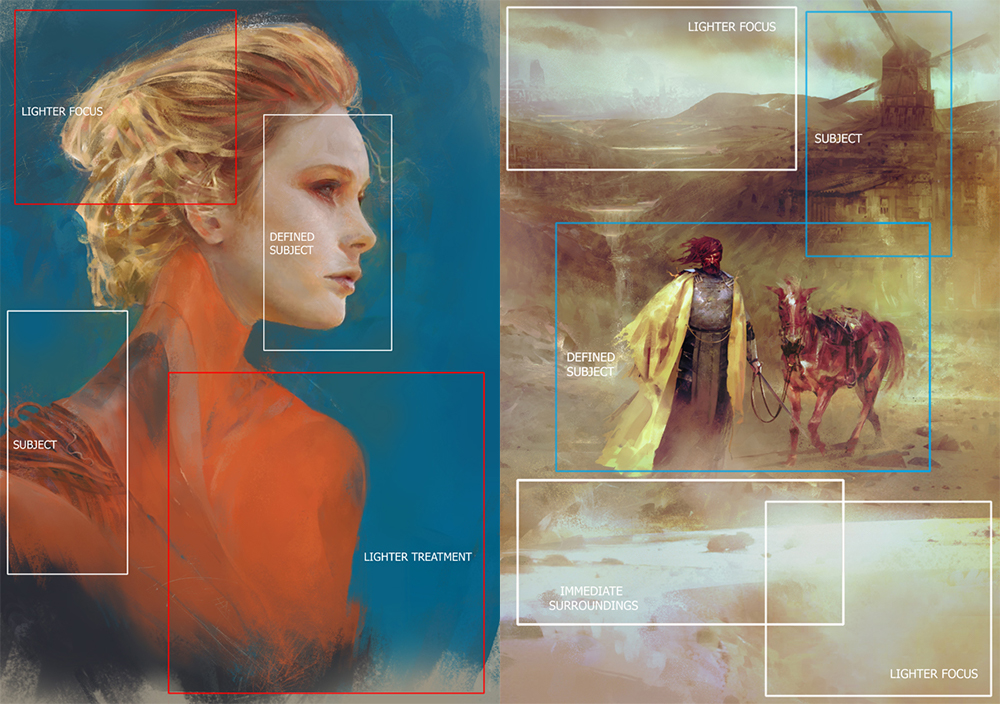
3. Always render your volumes in lines.
Whether transparent or thick, you should be able to draw your renderings one line at a time, as applying strokes randomly will only complicate your vision of the piece. I often see people lost or trapped in their treatment of volume. Creating a mind pattern for your next stroke will help you to understand renders and produce faster artworks. John Singer Sargent was famous for his ability to convey this rule in his paintings.
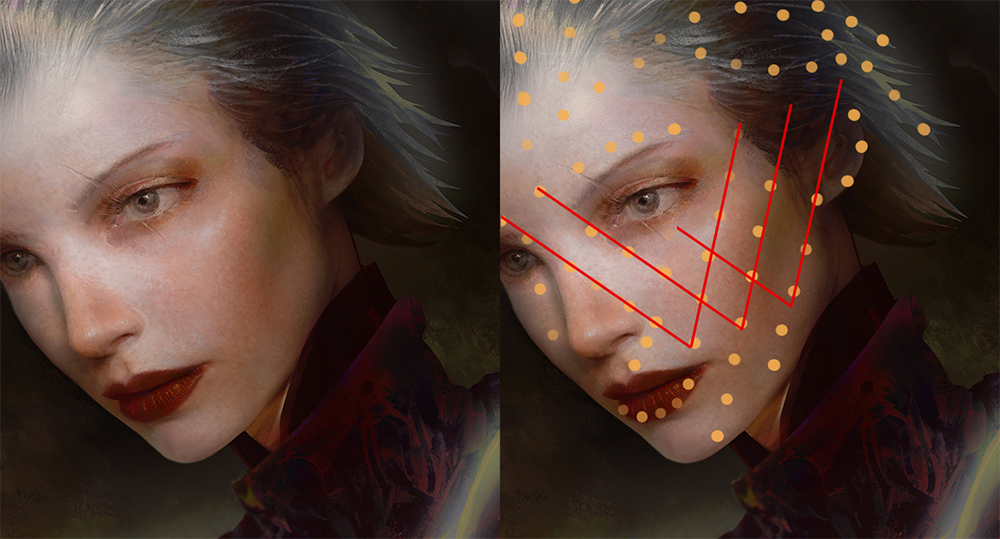
Color Vibrancy
I will introduce another oil painting technique that is still relevant in a digital format. It was originally a material constraint rule called “thick over thin.” However, it also had another very profound effect on the painting it was applied to, which is color vibrancy.
Vibrancy in digital media can be summarized as simply as this: When you are painting, your uppermost layers should always be the ones with heavy colors on them. The stronger the color and color percentage on those top layers, the more the painting will stand out and fluctuate in contrast. Considering this rule right after your composition is an important step that will positively affect your rendering and color choices naturally as time goes by.
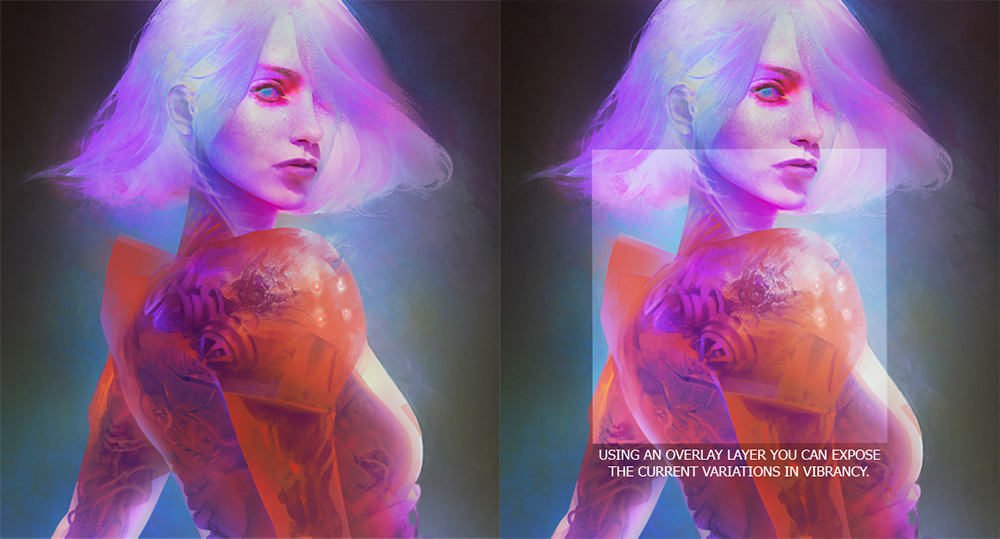

Painting with Texture
Impasto is an advanced traditional technique that adds a strong, sculptural, almost 3D expression to a painting. It can be recreated digitally to enhance textural effects and rendering.
Recreating an impasto mood digitally requires a non-transparent approach and the use of opaque over opaque brushes. Acrylic or gouache presets are ideal for this.
By painting the exact same line with a smaller nontransparent brush over the larger one, you can bring this particular effect to life. This rendering can be pushed even further by adding (sandwiching) an in-between layer of a 100% black stroke right before the use of your second color.
Finally, underpainting in plain black can also positively affect your impasto, as this will outline your volumes. This was a frequent method Van Gogh used to build up his canvas.
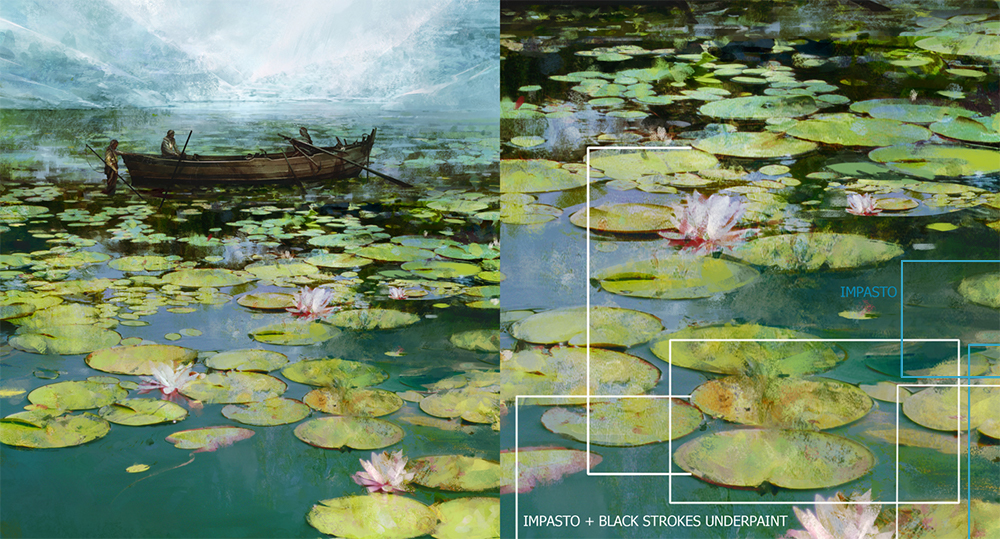
Painting with Contrast
Dramatic illumination in traditional media was a technique developed to achieve a rendering using strong contrasts in-between light sources. It is a highly impactful method, that can be summarized as instant directional and/or volumetric shading.
Obtaining this effect digitally requires the use of semi-transparent brushes, and a fixed warm low-temperature color (red, orange, yellow) that you will affect by strokes on each side.
As light modeling does not affect the color directly, it is in fact the easiest way to produce very fast and eloquent renders, as it only requires short variations of light degrees to be relevant, instead of complex variables of gradient strokes.
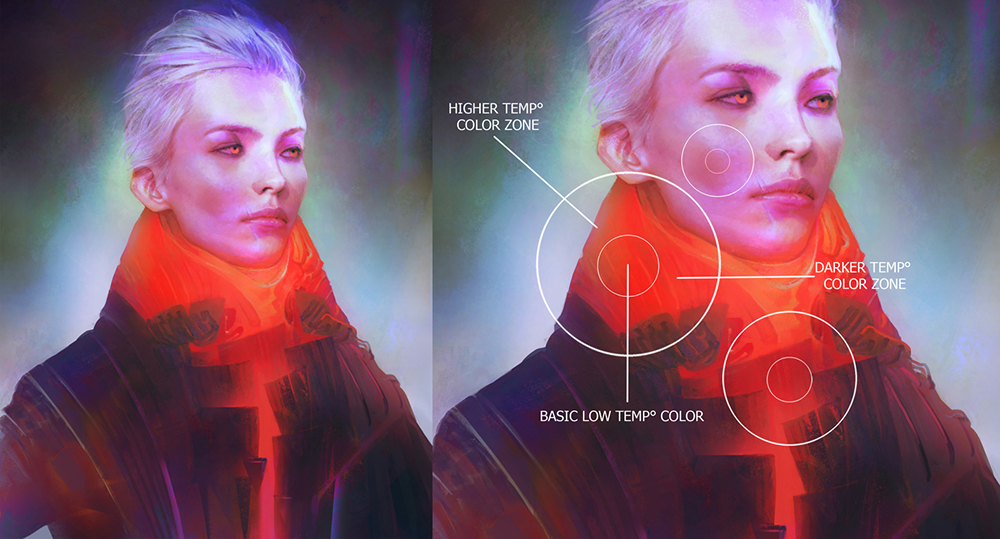
Bravura
Bravura means virtuosity in Italian. It is often what people will instantaneously feel by looking at the art of Velasquez, Titian, Vermeer, Goya, or Caravaggio. An immediate feeling of awe that many viewers can’t summarize properly. Of all the qualities most painters strive to achieve, this is the highest one.
The underlying principle of a Bravura brushstroke is a purposeful use of painting knowledge. It is engraved in each aspect I’ve tried to enumerate above, and attempting to produce those techniques again and again will help you a lot to properly grasp the Bravura concept and the depth behind it. It is a profound way to naturally bring life and personality into your paintings, whether you are a beginner or an advanced painter.
About the Artist
Simon Goinard is a French concept and visual development artist working in the entertainment and publishing industries for clients like 20th Century Fox, Ubisoft Entertainment, NBC, ArenaNet, The Walt Disney Company and more. He also works on side projects developing new technologies as well as his personal IPs. Some of the latter are shown in this article.
www.simongoinard.com
simongoinard.artstation.com
Interested in concept art or what it takes to become a concept artist?
Check out the link below!








